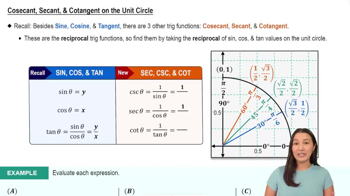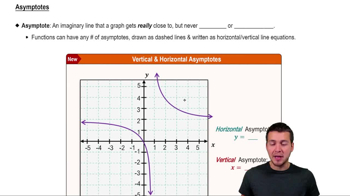Multiple Choice
Below is a graph of the function . Determine the value of b.
515
views
3
rank
 Verified step by step guidance
Verified step by step guidance Verified video answer for a similar problem:
Verified video answer for a similar problem:



 6:22m
6:22mMaster Graphs of Secant and Cosecant Functions with a bite sized video explanation from Patrick
Start learning